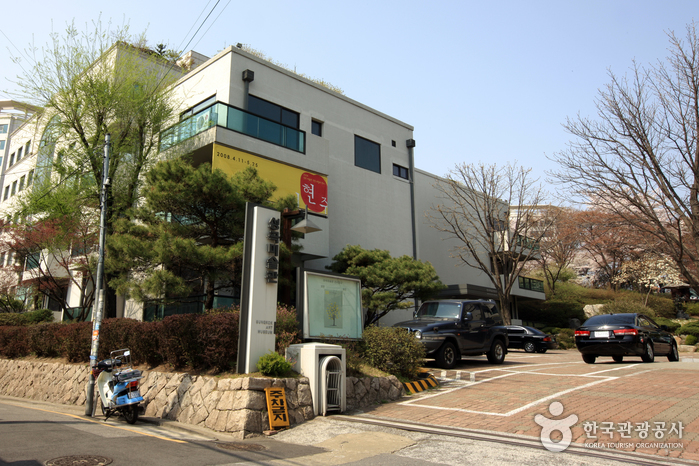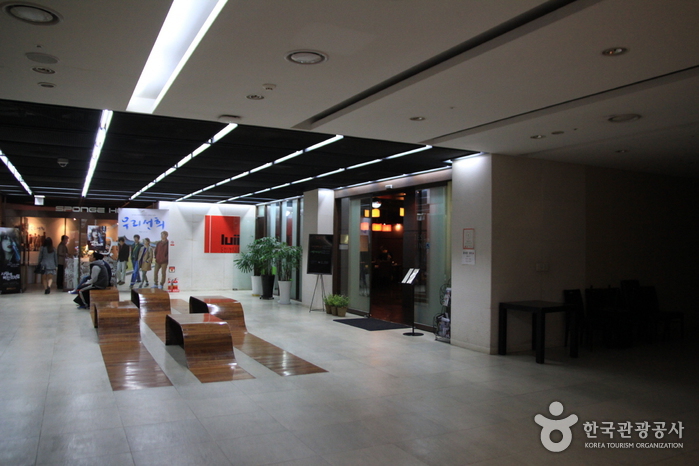Seoul Metropolitan Library (서울도서관)
8.4Km 2022-12-14
110, Sejong-daero, Jung-gu, Seoul
+82-2-2133-0300
Seoul Library provides access to a wide range of documents and materials about Seoul Metropolitan City. Visitors will find diverse resources related to the city including history, culture, urban planning, transportation, environmental issues, administration, reports on outbound visitors, research documents, video clips, and e-data.
Sungkok Art Museum (성곡미술관)
8.4Km 2021-02-10
42, Gyeonghuigung-gil, Jongno-gu, Seoul
+82-2-737-7650
Sungkok Art Museum was founded in 1995 by the Korean corporation Ssangyong to promote Korean art. The gallery offers a special exhibition featuring modern artworks of Korean artists, as well as competitions and sponsorships to develop Korean art. In addition to the main building, there is an annex, as well as a tea house and art shop.
Luii (루이)
8.4Km 2024-07-17
40, Sejong-daero 21-gil, Jung-gu, Seoul
+82-2-736-8889
Luii is a Chinese restaurant operated by a veteran chef with extensive experience in Chinese cuisine. The restaurant has several rooms of different sizes to accommodate various events. It also has a VIP room for more private gatherings.
Wellness Pharmacy [Tax Refund Shop] (웰리스약국)
8.4Km 2024-04-19
51, Myeongdong 10-gil, Jung-gu, Seoul
-
Wellness Pharmacy [Tax Refund Shop] (웰니스약국)
8.4Km 2024-06-27
51, Myeongdong 10-gil, Jung-gu, Seoul
-
V Spa - Lotte Avenuel Branch [Tax Refund Shop] (브이스파 롯데에비뉴엘)
8.4Km 2024-04-18
10F, 73, Namdaemun-ro, Jung-gu, Seoul
-
CH Carolina Herrera - Avenuel Branch [Tax Refund Shop] (CH캐롤리나헤레라 에비뉴엘)
8.4Km 2024-04-19
4F Lotte Department Store Main Branch AVENUEL, 73, Namdaemun-ro, Jung-gu, Seoul
-
BVLGARI - Lotte Avenuel Branch [Tax Refund Shop] (불가리 롯데 에비뉴엘점)
8.4Km 2024-04-18
73, Namdaemun-ro, Jung-gu, Seoul
-
Cartier - Lotte Avenuel Branch [Tax Refund Shop] (까르띠에 롯데에비뉴엘점)
8.4Km 2024-04-23
124, Singomae-ro, Giheung-gu, Yongin-si, Gyeonggi-do
-
![Ai Pharmacy [Tax Refund Shop] (아이약국)](http://tong.visitkorea.or.kr/cms/resource/98/3313898_image2_1.jpg)



![Wellness Pharmacy [Tax Refund Shop] (웰니스약국)](http://tong.visitkorea.or.kr/cms/resource/54/2878654_image2_1.jpg)
![V Spa - Lotte Avenuel Branch [Tax Refund Shop] (브이스파 롯데에비뉴엘)](http://tong.visitkorea.or.kr/cms/resource/04/2888404_image2_1.jpg)
![CH Carolina Herrera - Avenuel Branch [Tax Refund Shop] (CH캐롤리나헤레라 에비뉴엘)](http://tong.visitkorea.or.kr/cms/resource/07/2888707_image2_1.jpg)
![BVLGARI - Lotte Avenuel Branch [Tax Refund Shop] (불가리 롯데 에비뉴엘점)](http://tong.visitkorea.or.kr/cms/resource/58/2889758_image2_1.jpg)
![Cartier - Lotte Avenuel Branch [Tax Refund Shop] (까르띠에 롯데에비뉴엘점)](http://tong.visitkorea.or.kr/cms/resource/88/2889788_image2_1.jpg)
 English
English
 한국어
한국어 日本語
日本語 中文(简体)
中文(简体) Deutsch
Deutsch Français
Français Español
Español Русский
Русский